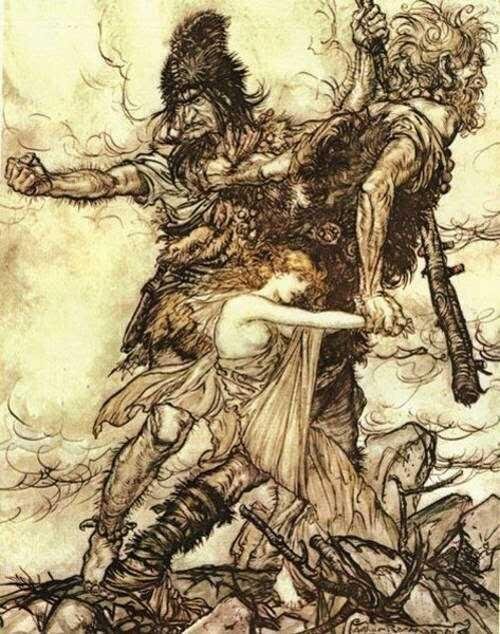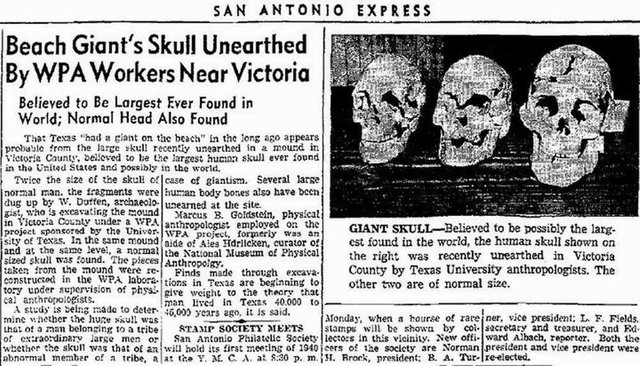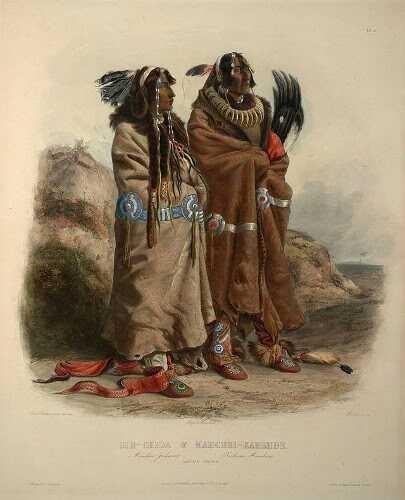Giant Human Evidence Once Mastered America
In the book 'The Ancient Giants Who Ruled America:
The Missing Skeletons and the Great Smithsonian Cover-Up' tells newspaper and photo articles, first person sources, history notes, and field reports are illustrated over 400 years.
The eyes of an extinct giant species, the bone filling the American mound, have stared at Niagara, as we do now. (Abraham Lincoln, 1848)
Richard J Dewhurst reveals that North America was once ruled by a giant human race, and the Smithsonian has kept physical evidence for almost 150 years.
Meanwhile, he also recounts that Indian tribes in America are preventing mound research, although admitting they did not build it.
Dewhurst is the award-winning Emmy Award category writer HBO 'Dear America: Letters Home from Vietnam'. She writes and edits History Channel, Arts & Entertainment Channel, PBS, Fox Television and Fox Films, ABC News, TNT, Paramount Pictures, and Miami Herald.
#Evidence of Giant Human Fossils Since 10,000 Years Ago
Not only is the story of the Olmec civilization embraced by gigantic statues, the mound in West Virginia is key in understanding the true story of the giant human who once ruled the American territory.
Not only is the site of West Virginia mounds in Charleston, Wheeling and Moundsville, some of the most significant sizes have been found in the United States.
In 1883, the Smithsonian sent a team of archaeologists to a South Charleston mound led by Colonel Morris to conduct extensive excavations on 50 bumps.

The excavation report explains that the research team found evidence of a giant human race, taller than normal human size and decorated with six heavy copper bracelets on each wrist, and on the shoulders found three large mica plates. In another mound, the diggers also found a circle with ten giant skeletons and an underground dome.
Various copper and mica ornaments, religious items, pipes and spearheads are also found in one location.
At a depth of nine meters, another giant skeleton is found on the remains of bark and coffin.
In the findings report, this giant has a skull of a compressed type (Flat Head).
The skeleton shows the characteristics of 'conical heads' similar to those found in South America and Egypt.
While excavations in other regions, archaeologists found giant racial groups with unusual skull formations in the form of a low forehead and tilted back gradually.
While the back of the head is very prominent, much different from the current human skull.
Near the excavation has been found eight-mile long wall and a temple on a hilltop.
The fossil search continued down the Cheat River in 1774, where they found the settlers they call The Giant Town, where there were found the most significant gigantic human skeletons, the 8-foot-tall male skull.
The remains of ancient human giants have been found throughout New York and New England, at least dating back to 9000 BC.
A 1983 Syracuse Herald American research report, an anthropologist from the Buffalo Museum of Science mentions 1400 artifacts unearthed from a Phoenix Hill site.
A history report written 'A History of Livingston County, New York' published in 1824, that in 1811 an Indian mound on Mount Morris was dug up and found a rough medallion, large giant pipe and fossil, large jawbone.
In 1871, the Cayuga NY newspaper report reported that 200 skeletons had been found in the ruins of the Grand River rim.
The skeleton is in perfect shape and the fossils are gigantic, some of which are nine meters in size, very few are less than seven meters. The lost city was also found in a Dunville NY farm, linked to two tons of charcoal and various tools indicating that the site was a 'blacksmith workshop'.
Also found axes, tomahawk, beads and pipe carved carved head of the dog, giant skull was also found from a very large size to twice the size of normal human beings with various shapes.
The discovery in Ohio is probably the most and most unusual, giant fossils measuring 8 to 10 feet.
There are also findings of Cincinnati tablets inscribed with Hieroglyphs, textiles that resemble Assyrians and Babylonians.
The skull fossils have been examined by a surgeon and prove that there has been brain surgery where the technology is superior to the present, as well as metallurgical, wrought, slag, iron and even saws.
In 1888, a Logan Gray military group led by AM Jones was training military on a small island in Eagle Lake near Warsaw, Indiana.
Under a flat rock, they found a hole leading to the entrance of a secret cave that was twenty-five meters long, ten cubits wide and eight meters wide.
Inside is a giant skeleton buried right beside the river, they call it a sacred pool.
In 1889, near Kewanna was found standing stone and beneath it was a giant fossil.
While at Whitlock, other giants are also found buried in groups in a sitting position.
In a report entitled 'A History of Jennings County Indiana' published in 1885, it was mentioned that in 1881 a nine-foot skeleton was found locally buried, along with the body of a blond boy.
In 1912 a very large jaw was found, the unique features of having double row teeth.

The Cahokia site is located at the main meeting of the Mississippi, Missouri and Illinois rivers, precisely located across the Mississippi River (currently St. Louis).
The peak consists of 120 main mounds, the monk mound is the largest measuring 100 meters with the original base of about 1000 feet.
Measurements to the bottom show similarities with Stonehenge and Teotihuacan.
During the excavation of the southern burial mound of the Monks Mound, archaeologists uncovered a man's burial fossil bedding adorned with over 20,000 shell beads composed of eagles, with a bird's head appearing below and next to his head, wings and a lower tail in his arms and legs.
Archaeologists also found more than 250 other skeletons, historians believe that nearly 62 percent are victims based on signs of ritual execution and burial methods.
In 1930, Don Dickson discovered the world's largest Neolithic eater.
It's 90 miles south of Peoria at the intersection of the Illinois River.
Together with the University of Chicago, Dickson dug 248 skeletons, the site is estimated to have more than 3000 cemeteries, many unusual stature and gigantic.
The site is called Dickson Mounds Museum, able to attract the attention of 75,000 visitors per year where they can see the skeleton directly.
In 1990, local Indian tribes claimed that the site was closed and fossils were again buried in their tribal cemetery, although there was no genetic link between fossils and local Indians.
A report from the Oakland Tribune in 1926 about the discovery of a six-mile city in Nevada, mentions the wreckage in a six-mile continuous line and about half a mile wide.
#The outline of the stone house is clearly visible.
In 1911, William Altmann assistant curator of the Golden Gate Memorial Museum has found skeletons, pottery, and artifacts in Port Costa, including a giant skeleton over seven meters.
Later that same year, Altmann reported finding a giant skeleton on the island of Santa Barbara Channel. In 1934, The Bakersfield California reported that the Smithsonian under the direction of Dr. WT Strong and WM Walker found 564 skeletons and 4000 artifacts from a series of mound sites near Taft, California.
Researchers at Winnsboro LA were involved in a drainage project, he found a giant fossilized race of twelve feet tall.
The skull is in perfect shape and some jawbone is big enough.
In Alabama, the 400 skeletons dug in Moundville by the Alabama Museum of Natural History estimate that some of the life skeleton since 3000 BC with the largest specimen is 7 feet 6 inches tall.
#Indian Mandan, Mysterious Tribe of the Giant Human Descendants?
Mandian Indian tribes are commonly found in North Dakota since their first contact with the French explorers in 1738.
The blue-eyed, blond or red-haired Mandian indian tribe became a source of speculation about their alleged origin of Europe.
In 1796, indian Mandan visited the Welsh explorer John Evans, hoping to find evidence that their language contained the Welsh words.
#Evans had arrived in St. Louis two years earlier and after being imprisoned for a year, he was employed by the Spanish government leading an expedition to map the upper Missouri.
Evans spent the winter of 1796-1797 with the Mandian indian tribe, but found no evidence of Welsh influence.
In July 1797, he wrote to Dr. Samuel Jones, after exploring and charting Missurie along the 1800 miles and communicating with Indians on the Pacific Ocean side 35-49 degrees Latitude, he stated that there was no such person as 'Welsh Indians'.
In 1804, Lewis and Clark also spent time visiting the Mandan tribe where they met Sacagawea who later helped them as guides and translators.

A cave south of the Cumberland River, found a secret room of 25 square meters and showing signs of machine tools for containing cutting stones, as well as a huge blond-haired skeleton.
In another cemetery on a nearby hilltop, carved ivory beads are found to be of the highest quality.
Then in 1833, western artist George Catlin was also convinced of the European roots of the Mandan tribe, tribal life using paint painting the village and religious ceremonies.
Although traditional archaeologists reject crude European heritage in this mysterious tribe, nothing is certain including the Haplogroup X test ever conducted on a surviving tribe member and a scientific blood test, and all theories about their origins are purely based on Superstition, academic testing and no opinion is true.
#The Ancient Giant Human Kingdom is the World's Largest Copper Producer
Reconstruction of the history of mounds in America, found an important place located on Lake Superior.
The volcanic event has turned the copper bearing rocks over the waterline, allowing all the sulfur to evaporate into the open air.
Copper found on the most pristine Isle Royal in the world. All open areas are found in ancient pits and trenches up to 20 meters long.
Carbon dating tests on copper artifacts show that artifacts are 5700 years old, while other open excavations across much older areas range from 8000 to 10,000 years.
The most conservative estimate over a period of 10,000 years, more than 500,000 tons of copper has been taken from the mine.
The report's findings are titled 'Prehistoric Copper Mining in the Lake Superior Region' published in 1961, where Drier and Du Temple estimated more than 1.5 billion pounds of copper had been mined from the region. Since traditional researchers refuse to analyze copper, no one has been able to explain for what all this copper is.
Researchers have determined continuous mining activities beginning in 8000 BC and then ending around 1500 BC, the same time as the Thera volcano explosion, Santorini (Crete).
The Crete trading ship has been found in the area of excavation, a testament to the connection between Crete and North America since the beginning of history.
In addition, researchers proved that copper mining activities continued again around 900 AD, according to evidence related to the presence of Viking.
Archaeologists have found evidence of advanced cultural and mining activities at least 9000 BC on the Oconto and Osceola sites.
Copper artifacts include spears, arrow-points, knives, adzes, gouges, textiles equipped with beads and even bone flutes that can still be played.
In 1794, it was also reported that an ancient furnace was found as well as a bar of iron, and a copper hardener.
Then between 2002 and 2010, a copper smelting kitchen was found with forgings and methods for copper hardening, including a very sophisticated example of copper plates.
The mica mine in North Carolina is the most significant natural resource site in North America.
Across the United States and Mexico, many grave mounds are found revealing mica jewelry, ornaments and decorations, most of which can be attributed to mica mines thought to have existed since ancient prehistoric times.
Other findings include examples of pottery and copper from the Caddo culture covering North Texas, Oklahoma, Louisiana, and Arkansas. Then also found carved slates found in Minnesota as well as copper pieces identical to those recently found in Cahokia.
Excavations dug Chillicothe, artificial hollow metal artefacts have been found, in addition to finding carved pipe also found duck artifacts that boarded the fish.
At the same mound location, dozens of skeletons were found wearing copper masks.
The site also has fossils at a depth of 14 meters, a large skeleton found wrapped in a copper armor.
Excavations in 1889 in Southern Ohio, found human fossil giant burial with tiger bone, and other fossils buried with 147 bones and Conch shell beads and Pyrula shells that may be imported from the Atlantic Ocean.
In the 1920s, the Catalina island owned by Wrigley who employed Prof. Ralph Glidden conducted a series of excavations on the island with the direction of the Catalina Museum.
Glidden and his team found 3781 skeletons of a giant human race with blond hair.
The highest is believed to be a king of 9 feet tall and the average height of the other skeleton is about 7 feet.
It also found remnants of megalithic temples like Stonehenge.
The carbon-radio test piece revealed several skeletons dug up 7000 years old.
Previously official excavations on unclosed sites have found hundreds of gigantic skeletons in the open.
Unfortunately, all the evidence disappears from historical records.
For more than 50 years the evidence relating to the discovery was strongly denied by the University of California and the Smithsonian, but in 2011 it finally acknowledged that the evidence of the invention has been kept secret and access limited.
nice artikel
Hi @cutkurata
Excellent article. I subscribed to your blog. I will follow your news.
I will be grateful if you subscribe to my blog @user2627
Good luck to you!